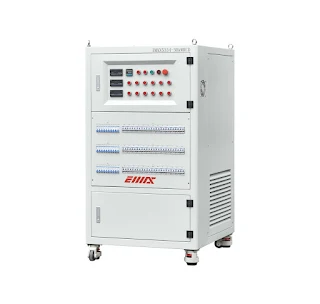What is a 4-Hour Load Bank Test?
In the world of power systems, ensuring that your backup power generation equipment is fully operational is essential. A critical aspect of this is conducting regular load bank tests, and one of the most common practices is the 4-hour load bank test. Whether you're a facility manager, data center operator, or anyone responsible for maintaining reliable power sources, understanding this test is essential.
In this blog, we'll explore what a 4-hour load bank test is, why it's important, how it's conducted, and the benefits it provides.
What is a 4-Hour Load Bank Test?
A 4-hour load bank test specifically refers to testing the generator or UPS for a continuous 4-hour period under different load conditions. The purpose of this extended test is to ensure the equipment's ability to run consistently and reliably over an extended time frame.
This type of test is typically required by governing bodies like the National Fire Protection Association (NFPA), particularly for healthcare facilities that rely on backup power systems to maintain life-saving equipment during outages.
Key Stages of a 4-Hour Load Bank Test
A 4-hour load bank test is usually broken down into stages, with different loads applied at each stage:
1.Warm-Up Stage (30 minutes): The test begins by applying a small load—typically around 30% of the generator's rated capacity. This stage helps the generator warm up and reach its optimal operating temperature.
2.Steady Load Increase (2 hours): The load is gradually increased, often to 50% and 75%, to ensure the system can handle intermediate levels of demand.
3.Cool-Down Stage (30 minutes): Finally, the load is gradually decreased, allowing the generator or UPS to cool down under less strenuous conditions.
What Equipment is Used?
During a 4-hour load bank test, the following equipment is typically used:
- Load Banks: These devices simulate electrical loads, and they come in various sizes and configurations depending on the generator's capacity. They may be resistive, inductive, or capacitive, each simulating different types of loads.
- Meters and Sensors: These devices measure voltage, current, frequency, and other performance metrics.
- Data Logging Devices: In most professional settings, results from the test are recorded and analyzed to identify any issues that need correction.
Why is a 4-Hour Load Bank Test Important?
1. Ensures Reliability
The ultimate goal of a 4-hour load bank test is to ensure that the generator or UPS can provide power without failure for a sustained period. This is critical in industries like healthcare, data centers, and manufacturing, where even a momentary loss of power can have devastating consequences.
2. Identifies Potential Issues
A load bank test allows operators to identify any problems—such as overheating, voltage instability, or fuel system issues—that might not be apparent during shorter tests or under lower loads. Catching these issues early prevents costly repairs or failures during a real emergency.
3. Verifies Fuel and Engine Efficiency
Running the generator for 4 hours under varying load conditions helps ensure that the fuel system and engine are operating efficiently. This prevents issues like wet stacking in diesel generators and ensures that the generator consumes fuel at an optimal rate.
4. Regulatory Compliance
For industries with strict regulations, such as hospitals and data centers, regular load bank testing is a requirement. For example, NFPA 110 requires hospitals to test their emergency power systems at least once a year with a 4-hour load bank test. Compliance with these regulations is not just about avoiding fines—it's about ensuring the safety and reliability of critical systems.
How to Conduct a 4-Hour Load Bank Test
While the actual execution of a 4-hour load bank test may vary depending on the specific generator or UPS system, the following general steps are usually involved:
Preparation: Ensure that the generator or UPS is fully inspected and that all connections are secure. It's also essential to check that the load bank is compatible with the generator's capacity.
Initial Load Application: Start by applying a small load to the generator, gradually increasing it according to the test plan.
Monitoring: Throughout the test, technicians should monitor key performance indicators such as voltage, current, and frequency to ensure that the generator is functioning correctly.
Data Collection: Record data at each stage to identify any potential issues or performance irregularities.
Test Conclusion and Analysis: Once the test is complete, technicians should analyze the collected data to ensure that the generator performed optimally and make any necessary adjustments or repairs.
Conclusion
A 4-hour load bank test is a crucial aspect of maintaining and verifying the reliability of backup power systems. It helps ensure that your generator or UPS can handle the loads required during an emergency and highlights any potential issues before they become costly failures.
For businesses and facilities that rely on uninterrupted power, regular load bank testing is not just a recommendation—it's a necessity. By performing a 4-hour load bank test, you're not only complying with industry standards but also protecting your facility from unforeseen power outages and equipment failures.
Ensuring the reliability of your backup power system today can save you from major headaches tomorrow.






Comments
Post a Comment